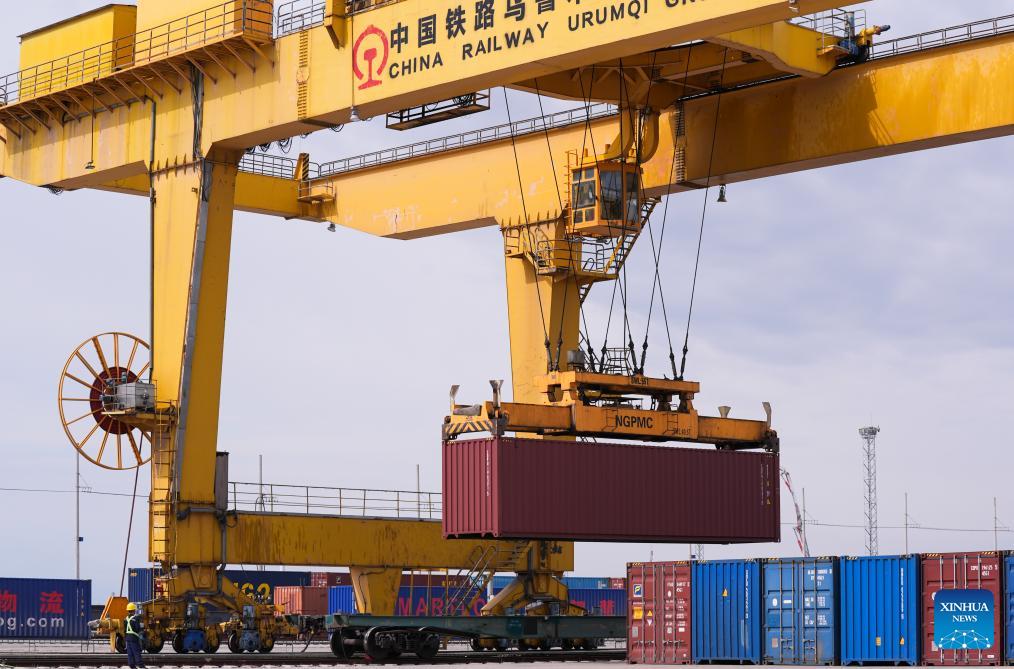
 0 Comment(s)
0 Comment(s) Print
Print E-mail China Daily, November 21, 2024
E-mail China Daily, November 21, 2024

This photo taken on May 29, 2024 shows a view of the load-transfer yard of Horgos Port in Horgos, northwest China's Xinjiang Uygur Autonomous Region. [Photo/Xinhua]
The Xinjiang Uygur autonomous region's foreign trade in the first 10 months of the year reached 362.79 billion yuan ($50 billion), up 28 percent year-on-year, registering the fastest growth rate among all provincial-level regions around the country.
In 2023, Xinjiang's foreign trade totaled 357.3 billion yuan. From January to October this year, the region's exports reached 308.29 billion yuan, up 28.9 percent, while its imports were worth 54.5 billion yuan, an increase of 23 percent.
During the period, foreign trade by private enterprises in Xinjiang grew 26.8 percent year-on-year and accounted for 92.4 percent of the region's total foreign trade, according to regional customs data.
Xinjiang's export markets have become increasingly diversified, as its reliance on the five Central Asian nations continues to decline, while trade ties with Southeast Asian countries have grown significantly.
In the first 10 months, Xinjiang's trade with the Association of Southeast Asian Nations surged 243.7 percent year-on-year, while its trade with members of the Regional Comprehensive Economic Partnership increased 206.4 percent.
Thanks to the Belt and Road Initiative, improved infrastructure, including better transportation accessibility, has attracted more private enterprises to invest in Xinjiang, said Lin Shen, an associate research fellow at the Chinese Academy of Social Sciences' Institute of World Economics and Politics.
Lin noted that the development of the China-Europe Railway Express has enhanced the efficiency and cost-effectiveness of product transportation, ensuring convenience in import and export activities, which in turn is boosting economic and trade cooperation between Xinjiang and foreign regions.
"Xinjiang has a solid development foundation in the energy and industrial sectors, which aligns well with growing import demand from Southeast Asian countries for minerals, agricultural produce and electromechanical products, as the latter pursue economic growth and industrial upgrades. The prospects for future cooperation are even more promising," Lin said.
The quality of products from Xinjiang has gained a strong reputation and recognition overseas, Lin said, adding that the products are competitively priced and tailored to meet the needs of various countries, driving growth in demand for them.
Data from the Urumqi Customs shows that opening-up platforms, such as free trade zones and comprehensive bonded zones, have become powerful engines driving Xinjiang's foreign trade growth.
During the January-October period, Xinjiang's free trade zones achieved a total import and export value of 145.7 billion yuan, contributing 40.2 percent to the region's foreign trade.
Meanwhile, its four comprehensive bonded zones in Kashgar, Khorgos, Alashankou and Urumqi recorded a combined trade value of 147.69 billion yuan, up 24.1 percent year-on-year, accounting for 40.7 percent of the total.